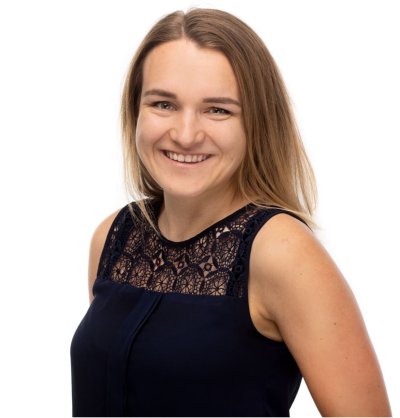Moving forwards by going outside - Inertial measurement unit-based monitoring of running biomechanics
Marit Zandbergen is a PhD student in the department Biomedical Signals and Systems. (Co-)Supervisors are prof.dr. J.H. Buurke, prof.dr.ir. P.H. Veltink and dr. J. Reenalda from the faculty of Electrical Engineering, Mathematics and Computer Science.
 Runners are at high risk of developing running-related injuries. Prospective studies found biomechanical differences between runners who acquired an injury and those who remained injury free. This link between running biomechanics and injuries sparks our interest in monitoring running biomechanics to prevent running-related injuries. Running biomechanics are typically studied in a controlled-lab setting in an unfatigued state, although most runners train outdoors while experiencing different fatigue levels. Biomechanical differences between controlled lab settings and outdoor environments urge us to monitor running biomechanics in sport-specific environments. Inertial measurement units allow us to move motion analysis outside the lab. However, it is unclear how biomechanical quantities can be extracted from sensor data and which quantities should be monitored. Hence, this thesis aims to increase our understanding of running biomechanics as measured in and outside the laboratory and explore the challenges regarding wearable motion analysis during running in a sport-specific setting. Based on this general aim, this thesis aims to answer the following research questions:
Runners are at high risk of developing running-related injuries. Prospective studies found biomechanical differences between runners who acquired an injury and those who remained injury free. This link between running biomechanics and injuries sparks our interest in monitoring running biomechanics to prevent running-related injuries. Running biomechanics are typically studied in a controlled-lab setting in an unfatigued state, although most runners train outdoors while experiencing different fatigue levels. Biomechanical differences between controlled lab settings and outdoor environments urge us to monitor running biomechanics in sport-specific environments. Inertial measurement units allow us to move motion analysis outside the lab. However, it is unclear how biomechanical quantities can be extracted from sensor data and which quantities should be monitored. Hence, this thesis aims to increase our understanding of running biomechanics as measured in and outside the laboratory and explore the challenges regarding wearable motion analysis during running in a sport-specific setting. Based on this general aim, this thesis aims to answer the following research questions:
Chapter 2: How do running kinematics change due to running-induced fatigue?
Chapter 3: How to quantify and correct for the subject-specific effects of changes in running speed and stride frequency on impact-related running mechanics during a fatiguing outdoor run?
Chapter 4: Is peak tibial acceleration an indicator for tibial compression forces in running?
Chapter 5: Can the cyclical nature of running be used to acquire drift-free 3D orientation of a body segment using a single gyroscope?
Chapter 6: How to estimate 3D orientation and displacement of a single IMU on the lower leg using the quasi-cyclical nature of running?
A general introduction to running biomechanics, running-related injuries, and the scope and aims of the thesis are provided in Chapter 1. To better understand the possible link between running-induced fatigue and overuse-related injuries, the effect of running-induced fatigue on running kinematics is assessed through a systematic review with meta-analyses in Chapter 2. Running biomechanics are typically measured in controlled lab settings at a constant running speed, while most runners perform their training in an uncontrolled outdoor environment with different fatigue levels. Chapter 3 investigates and corrects the subject-specific effects of speed and stride frequency on impact-related biomechanical quantities during a fatiguing competitive Marathon. Chapter 4 critically evaluates the use of peak tibial acceleration as a bio-feedback quantity for tibial bone loading and tibial stress fracture risk.
Since most runners run outdoors, monitoring running biomechanics to prevent injuries should move outside with small and easy-to-use wearable sensors. The first steps to a single sensor 3D orientation estimation algorithm based on the semi-cyclical nature of running are made in Chapter 5. The knowledge from Chapter 5 is used to propose and validate a drift-free 3D sensor orientation and displacement estimation algorithm using the semi-cyclical nature of running based on a single inertial measurement unit in Chapter 6. In Chapter 7, the main findings from the preceding chapters of this thesis are discussed, along with suggestions for clinical implications and future research. Based on the findings of this thesis, we concluded that running-induced fatigue, speed, and stride frequency influence the gait pattern in a subject-specific manner. Additionally, peak tibial acceleration is not an appropriate indicator of tibial bone loading since it does not provide a complete picture of both internal and external compressive forces on the tibial bone. Finally, we concluded that the quasi-cyclical and quasi-2D nature of running could be used to estimate drift-free 3D sensor orientation and displacement with many benefits compared to other methods. We recommend monitoring running biomechanics in a sport-specific setting and shifting the focus from investigating kinematic quantities on a group level to the forces underlying them on a subject-specific level.





